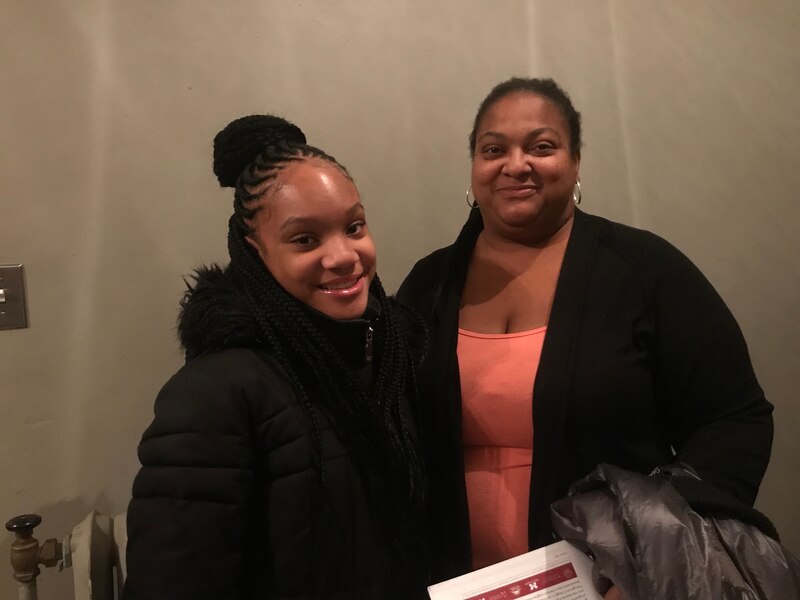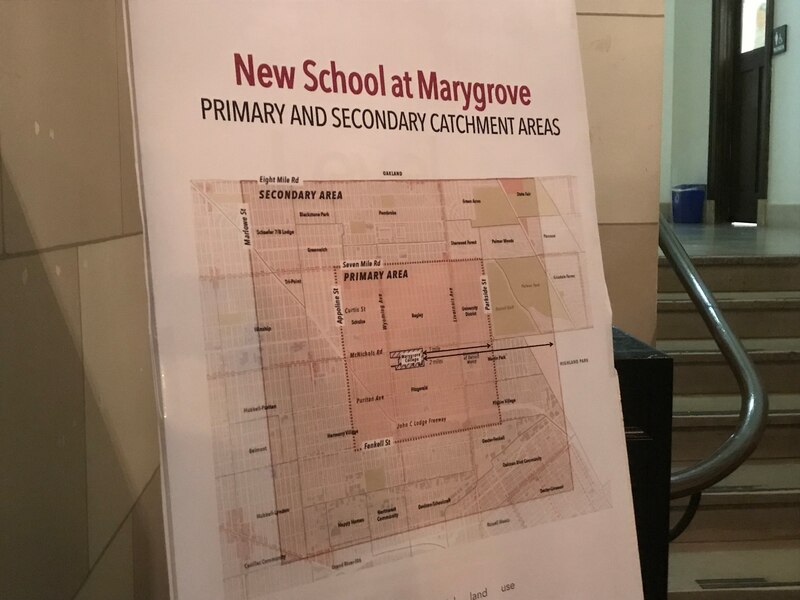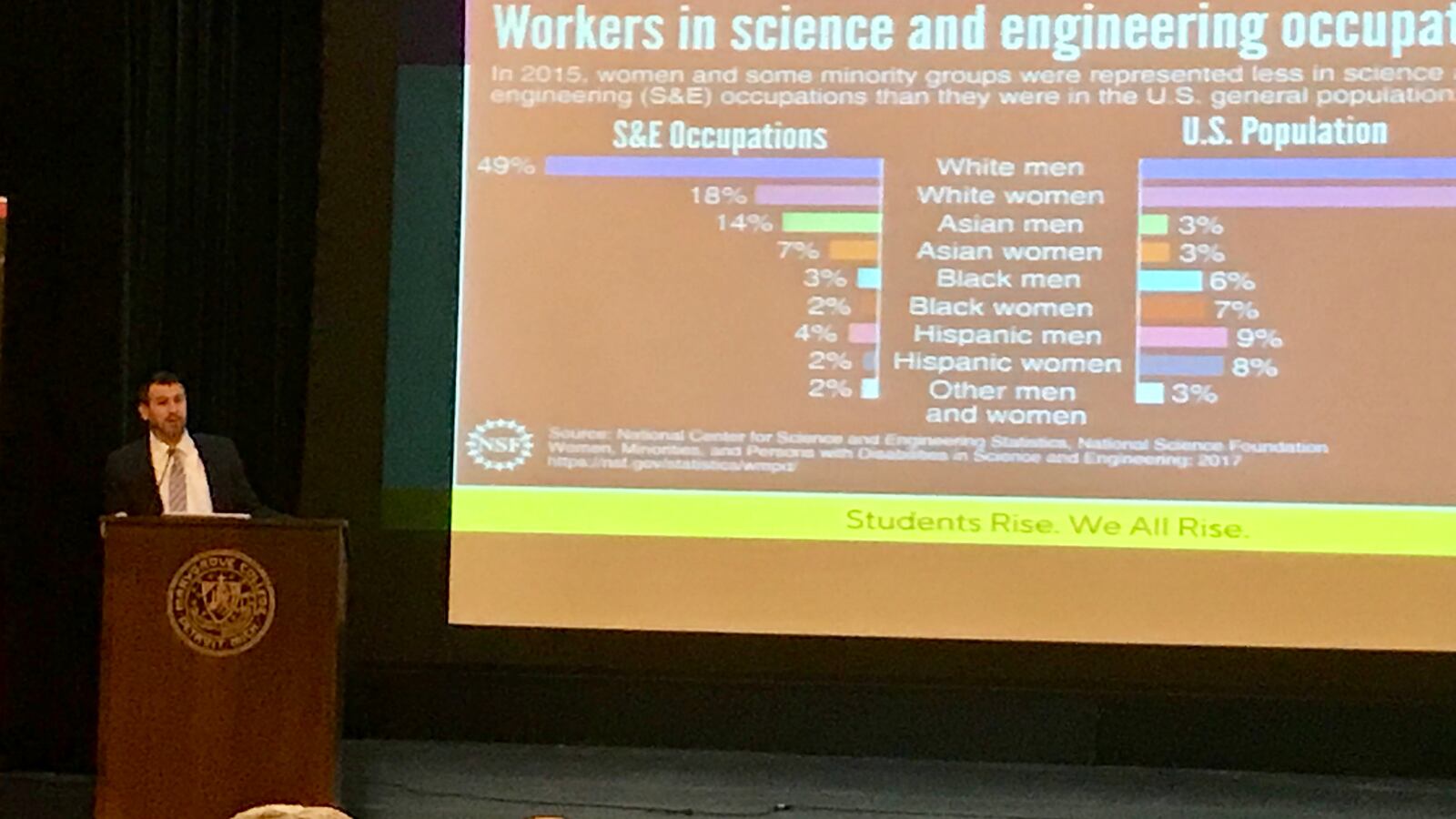Imagine this: A high school where students design a system to create equitable voting districts that don’t silence the voices of some residents.
Or a high school where students learn to test water for contaminants like lead.
Or a high school that finds a way to help Parkinson’s patients with shaky hands accurately measure a cup of liquid.
These are just some examples of how a focus on social justice and engineering might shape Detroit’s newest elite high school, which is set to open next year on the campus of Marygrove College.
It won’t be the first Detroit school with a social justice theme. The first, the Detroit Delta Preparatory Academy for Social Justice, abruptly closed in September, just a few weeks after the start of the school year. It failed to attract students to the school, and enrollment and budget problems forced its closure.
The school at Marygrove, which will open with ninth-graders only next fall, will be the newest addition to the Detroit school district’s cadre of schools that require an examination as part of the admissions process. A new grade will be added each year until the school covers grades 9-12.
It is part of a unique “cradle to career” campus at Marygrove that eventually will also include an early childhood center and a K-8 school. A $50 million contribution from the Kresge Foundation is funding the effort.
Officials from the Detroit school district and the University of Michigan, which is playing a strong role in the school, recently laid out initial plans for the new school before a large crowd of interested students and parents. Another meeting is scheduled for Wednesday at the college.
The deadline for applying to the school at Marygrove — or any of the district’s examination schools — is Jan. 18.
“If you’re interested in making a change in the world, and if you’re interested in design, this is the place for you,” Elizabeth Moje, dean of the university’s School of Education, told the crowd at the December meeting.
Nir Saar, former principal of Mumford Academy who will lead the new high school, explained the school’s theme this way: He said that engineering is about identifying complex problems and finding solutions to them. The social justice piece will have students “identifying the problems that have to do with a society we all live in that are unjust.”
He provided some examples, including the one about students designing a geographic mapping system for creating voting districts.
“By engineering new ways to look at population increases, decreases, we can design more equitable voting districts.”
The example of a tool to help someone with Parkinson’s came from a New York student. He said people with Parkinson’s often struggle to pour liquid into a cup and measure it accurately.
“This kid created a machine where if you type in the measurement … it will pour that amount into a cup,” Saar said.
The examples he gave of how social justice and engineering can intersect are the kind of things students “need to be engaged in if they’re going to be ready to go to the top schools. That’s the kind of work they’re going to have to figure out how to do.”
The engineering focus is also crucial, Saar said, considering 2015 data that show women and minorities are grossly underrepresented in science and engineering jobs.
“We’ll never have a society that is truly just and truly equitable until we have a representation of these people in all fields,” Saar said.
Jennifer Collins came to the meeting with her daughter, Bailee Williams, an eighth-grader at Clippert Multicultural Magnet Honors Academy.

Collins said they’re still exploring high schools for Bailee, and she was hoping to hear from officials “what is going to be so special about this high school.”
That was also the gist of the first question that officials received from a parent during a question-and-answer period.
Alycia Meriweather, a deputy superintendent in the district, explained that one unique feature is the partnership with the University of Michigan, which will co-design the curriculum with the school district. The “strength of the Michigan brand,” she said, is important.
Moje added that experts from other university departments will contribute to curriculum design. Among them: the School of Education, College of Engineering, School of Information, Ross School of Business, College of Nursing and College of Public Health.
“We don’t want business as usual. We want a really robust, rich curriculum,” she said. “We want to try to find the space where we can do something really innovative and exciting.”
In addition to its work with curriculum design, UM experts will also be using the K-12 schools to develop a unique approach to training teachers that will be similar to the way teaching hospitals train doctors.
Collins said she likes the engineering focus of the school and the small atmosphere — with each grade including just 100 to 120 students — that will mean students “won’t get lost in the shuffle.”
Bailee, who said Cass Technical High School is still at the top of her wish list, said she liked what she heard about the Marygrove school.
“I think it’s going to be exciting and a challenge just to be able to experience this new school,” she said.
Here are a few other details about the school:

Still a work in progress: The school is still designing curriculum, based on community input. During the first year, the school will be housed in the college’s Liberal Arts Building. For the second year, it will move to the Immaculata Building, which will undergo renovations. Students will work with architects and engineers to help design the renovations. Students will also help name the school.
Neighborhood priority: Unlike other examination schools in the district, priority will be given to students who live near the Marygrove campus. How will that work? Students can earn up to 100 points based on performance on the entrance exam, grade-point average, a writing sample, and references. Current district students earn an additional 10 points. Students who live within a mile of Marygrove earn an additional 10 points, while those who live within two miles earn 5 points.
Extracurricular activities: Because the school is small, it likely won’t join interscholastic sports competition. But the district plans to arrange with neighboring high schools to take Marygrove students who want to participate in activities like football and marching band. Students who enroll in the school will be able to create extracurricular clubs.

